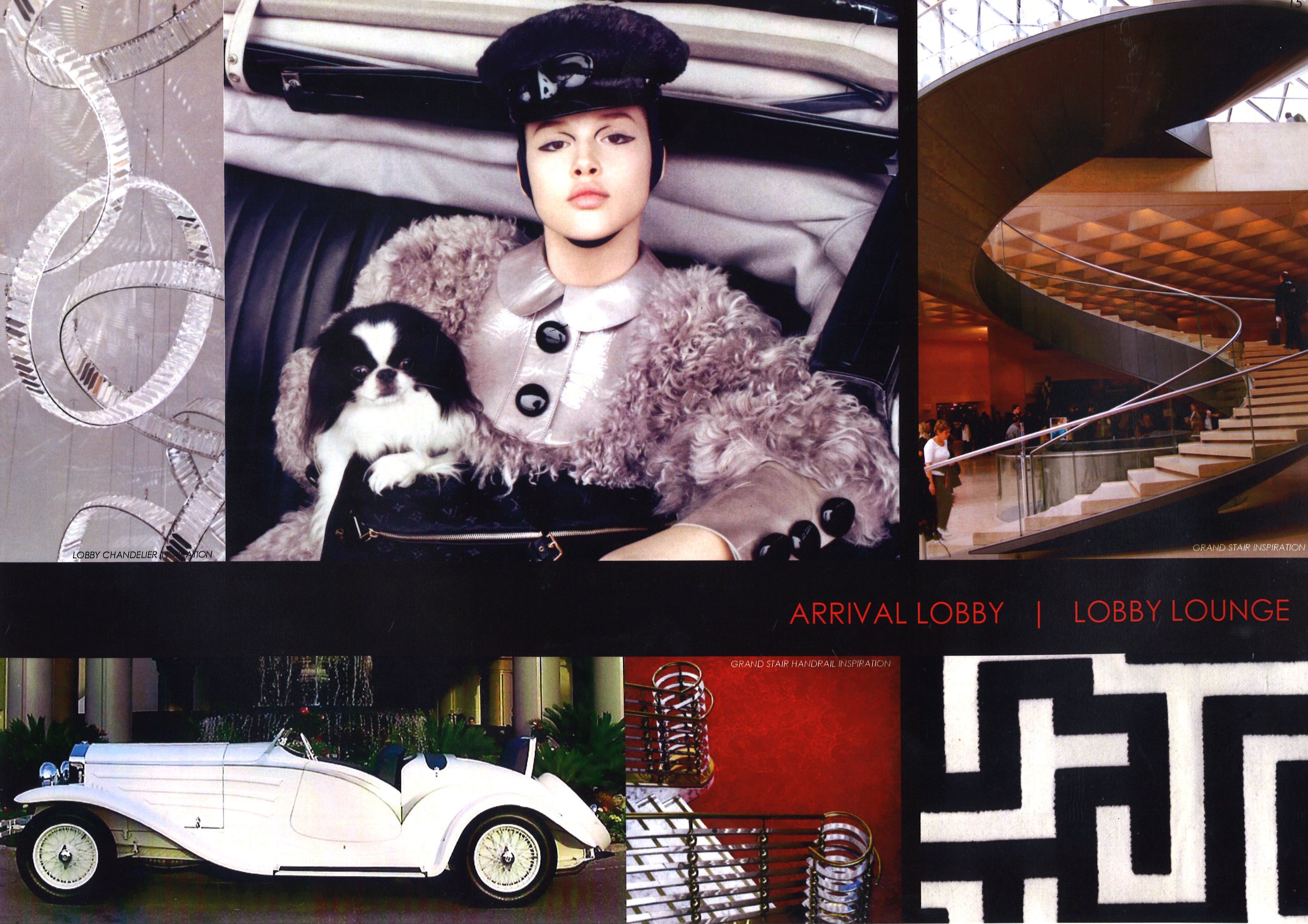How Can You Choreograph Hotel Guest Experiences?
Imagine of you could explore a whole hotel as cinematography? When designing hotel spaces with inspiration from the composition of movie scripts we can add a dramatic and a narrative quality to the guest experience. For the past 20 years I have been fascinated by choreography in hotel design, and how, by adopting a narrative structure inspired by movie scripts, you can create a cohesive and immersive experience for hotel guests, ensuring that each space contributes to the overall storyline of their stay.
Each hotel is unique and deserves a different script. Here’s a list of scenes to stage experiences throughout the hotel, drawing inspiration from the structure of a drama:
Scene 1: Arrival zone
Objective: Create a strong first impression
Design Elements: A grand arrival approach and entrance, striking architecture, dramatic lighting and a welcoming porte cochere area.
Script Inspiration: Introduce guests to the hotel’s world with a visually stunning and immersive arrival experience.
Scene 2: Lobby – Introducing characters and themes
Objective: Set the tone and introduce the hotel’s theme.
Design Elements: A sequenced design experience with a variety of spatial volumes, a welcoming arrival ambiance with signature artwork, and a focal point that represents the hotel’s unique identity. Engage multiple senses by incorporating elements like lighting (daylighting as well as artificial lighting that change the experience as a chameleon), screens, music, scents, colors and textures to create a holistic and immersive experience.
Script inspiration: Use the lobby as a prologue, offering glimpses of the hotel’s character and the unique experience that awaits.
Scene 3: Corridors transition: Building anticipation
Objective: Transition guests between common areas and from public to private spaces.
Design elements: Lighting that guides the way, subtle thematic details, and anticipation-building elements.
Script inspiration: Create a sense of intrigue as guests move from public to private spaces, by enhancing the transition between scenes.
Scene 4: Guest room: Unveiling the plot
Objective: Reveal the main plot, the guest’s personal haven.
Design elements: Thematic design elements, personalized touches and amenities that enhance the overall narrative. Offer rooms and suites that provide a distinct and memorable experience, such as specialty suites inspired by different travel themes (e.g. beach retreat, urban explorer, vintage glamor), each with its own unique design, amenities and personalized touches.
Script inspiration: Craft the room as the central setting where the guest becomes the protagonist, experiencing the story in a more intimate setting.
Scene 5: Culinary adventures - restaurants and dining
Objective: Offer a culinary journey with its own story line.
Design elements: Themed dining spaces, immersive culinary experiences, and innovative menus.
Script inspiration: Frame dining as a series of chapters, each offering a unique flavor profile and ambiance, contributing to the overall narrative.
Scene 6: Amenities: Supporting characters and subplots
Objective: Introduce supporting elements that enhance the overall experience.
Design elements: Unique amenities, themed facilities such as spa, pool or gym and other engaging activities.
Script inspiration: Develop subplots by providing diverse amenities that complement the main narrative, enriching the overall guest experience.
Scene 7: Climactic moments: Special events and spaces
Objective: Create climactic moments for guests through events or unique spaces.
Design elements: Versatile event spaces, thematic event planning, and interactive installations.
Script inspiration: Design special events as climactic experiences, providing guests with memorable and impactful moments during their stay.
Scene 8: Departure: Resolving the experience - Check-out and farewell
Objective: Conclude the guest experience with a satisfying resolution.
Design elements: Farewell gestures, thematic check-out experience, and a memorable token as a parting gift.
Script inspiration: Wrap up the guest’s journey with a sense of closure, leaving them with positive memories and a desire to return.
You need a good script and story board to be able to tell a compelling story and create memorable experiences”

